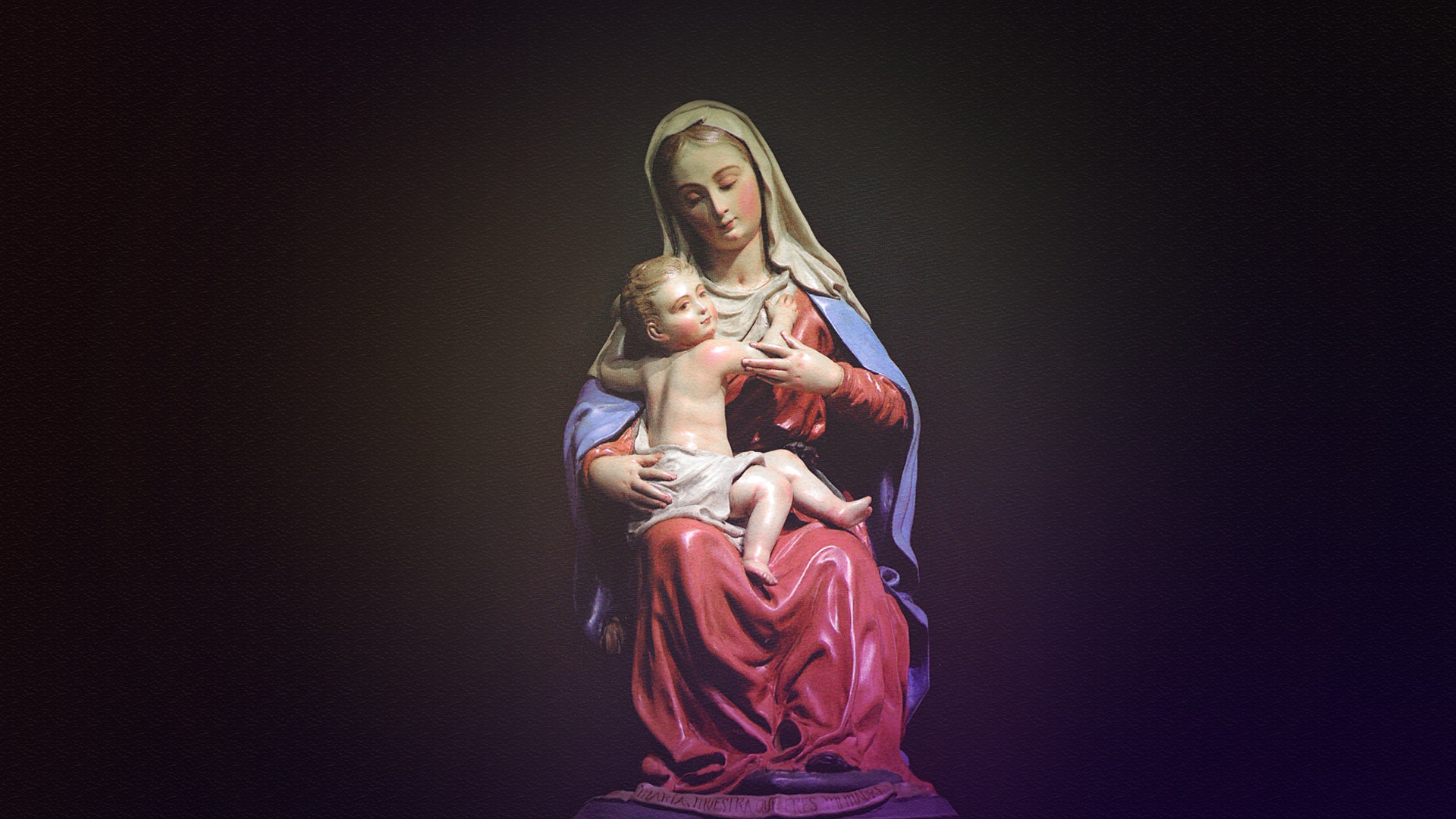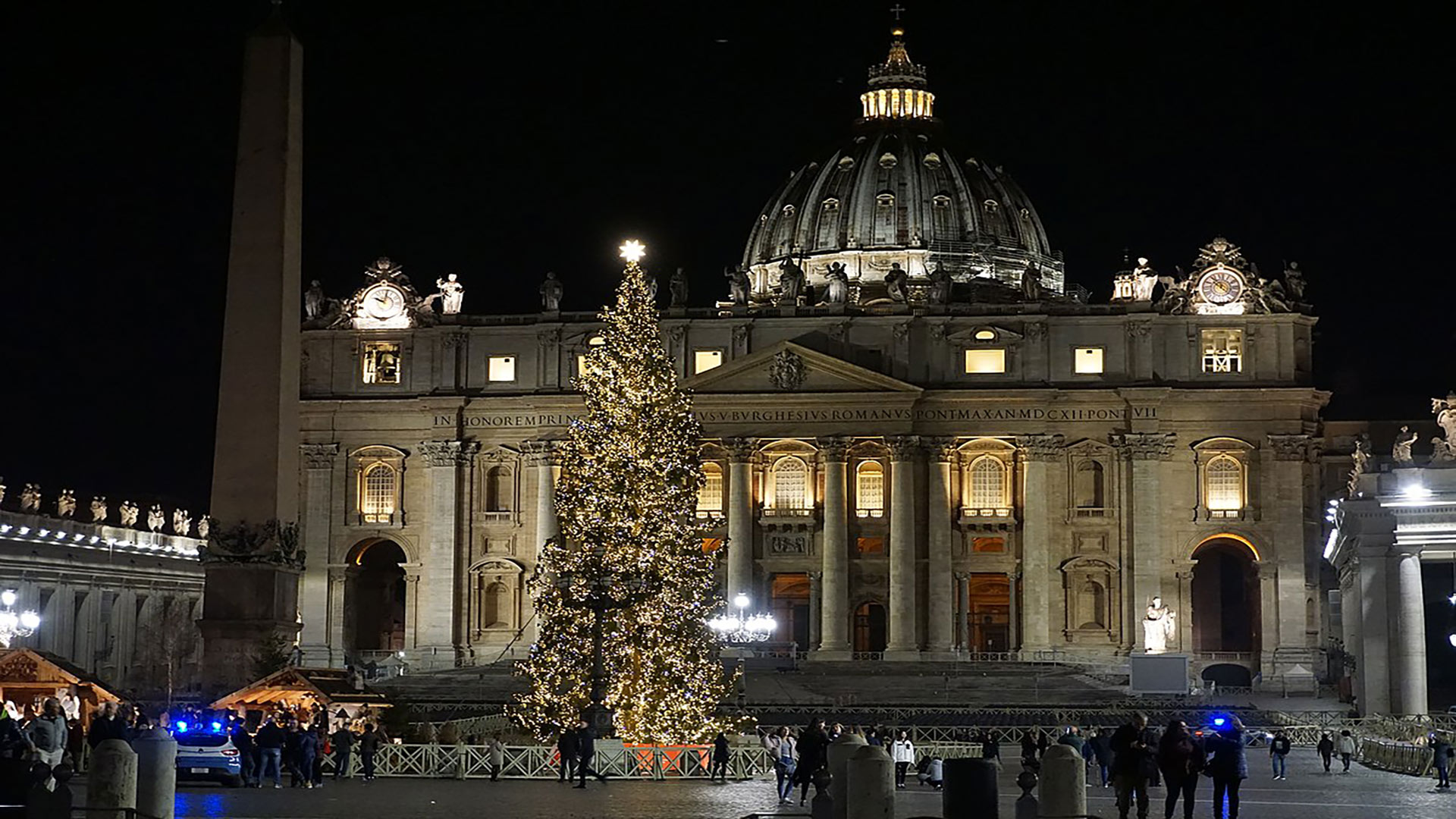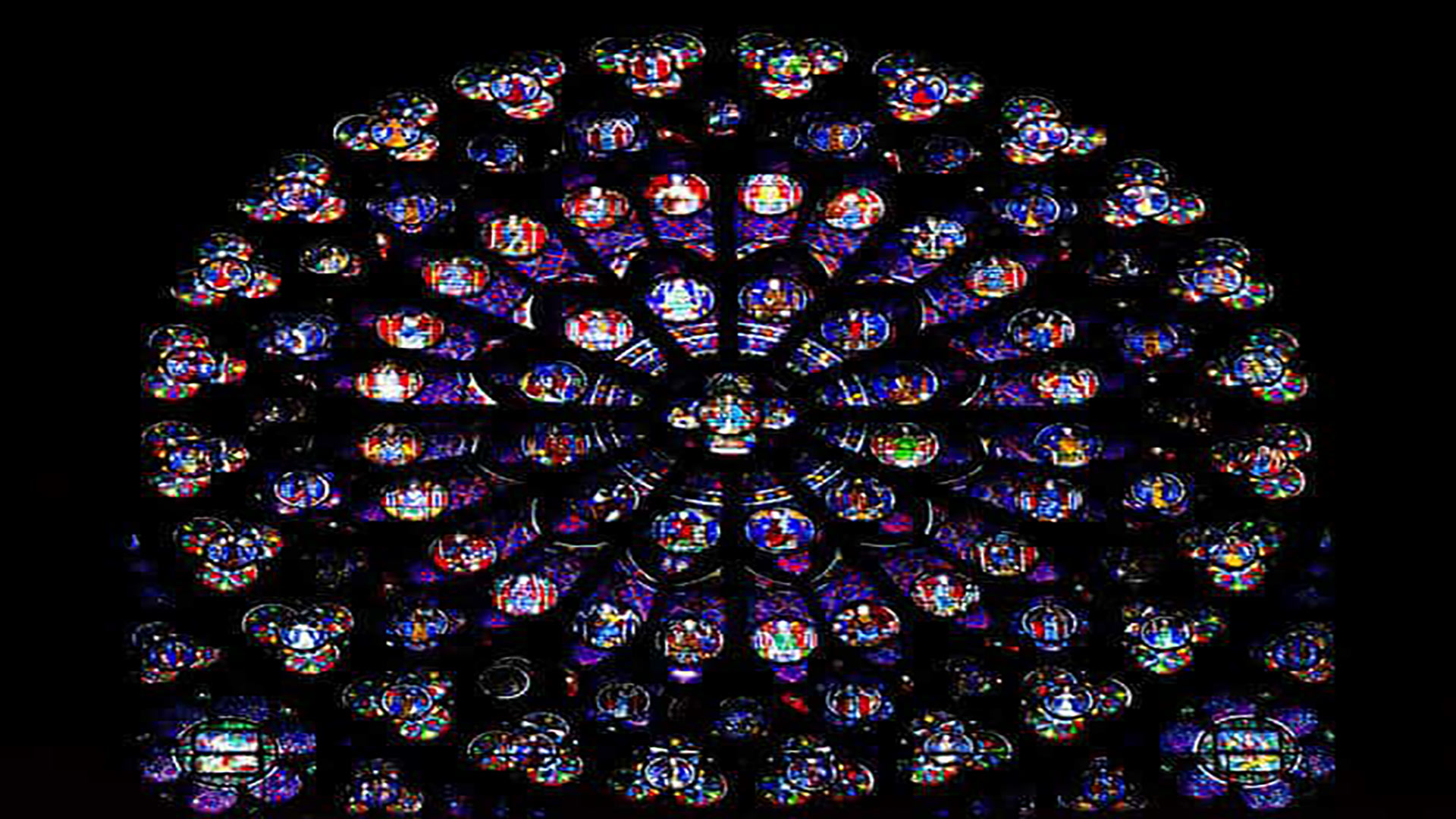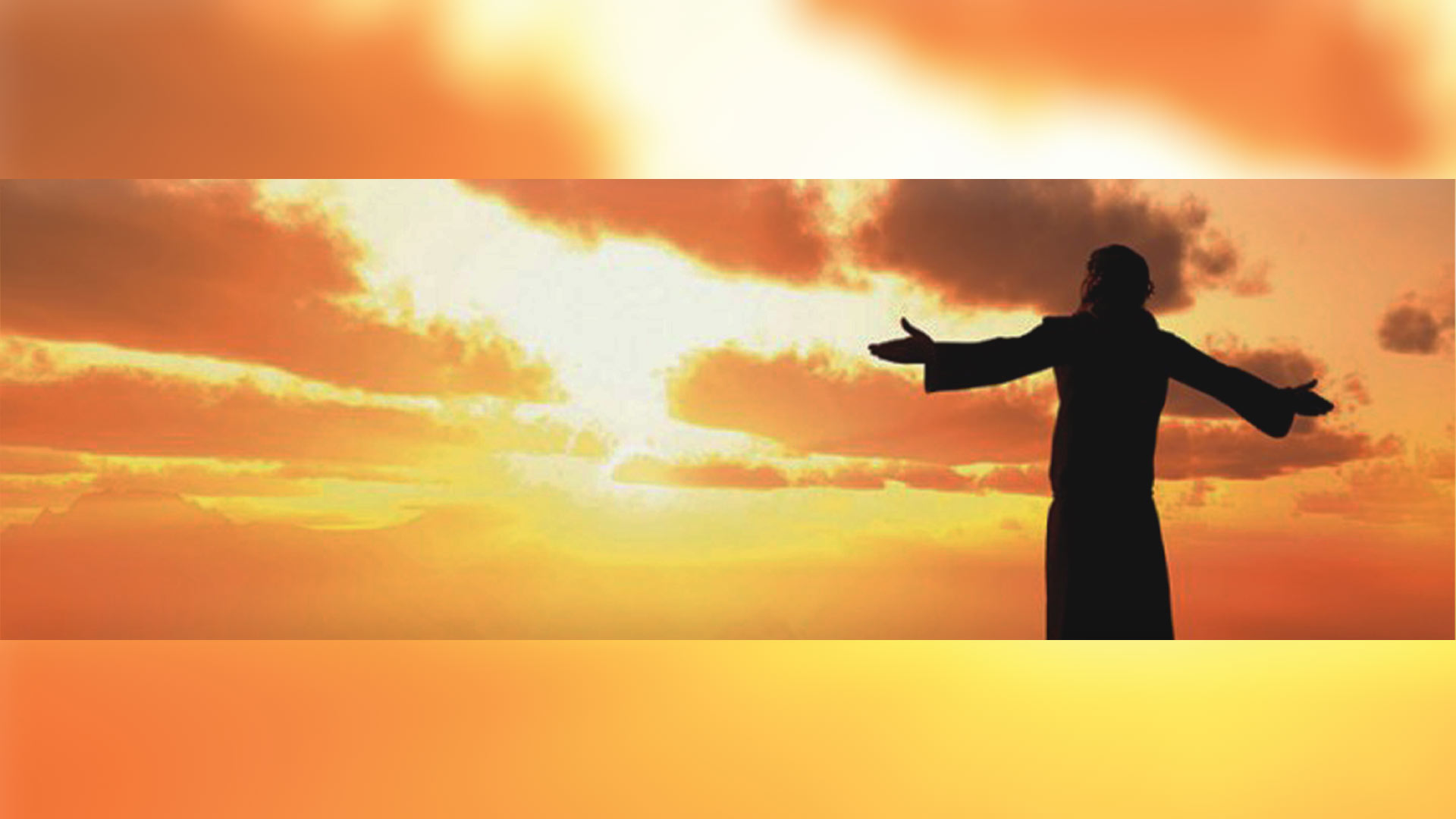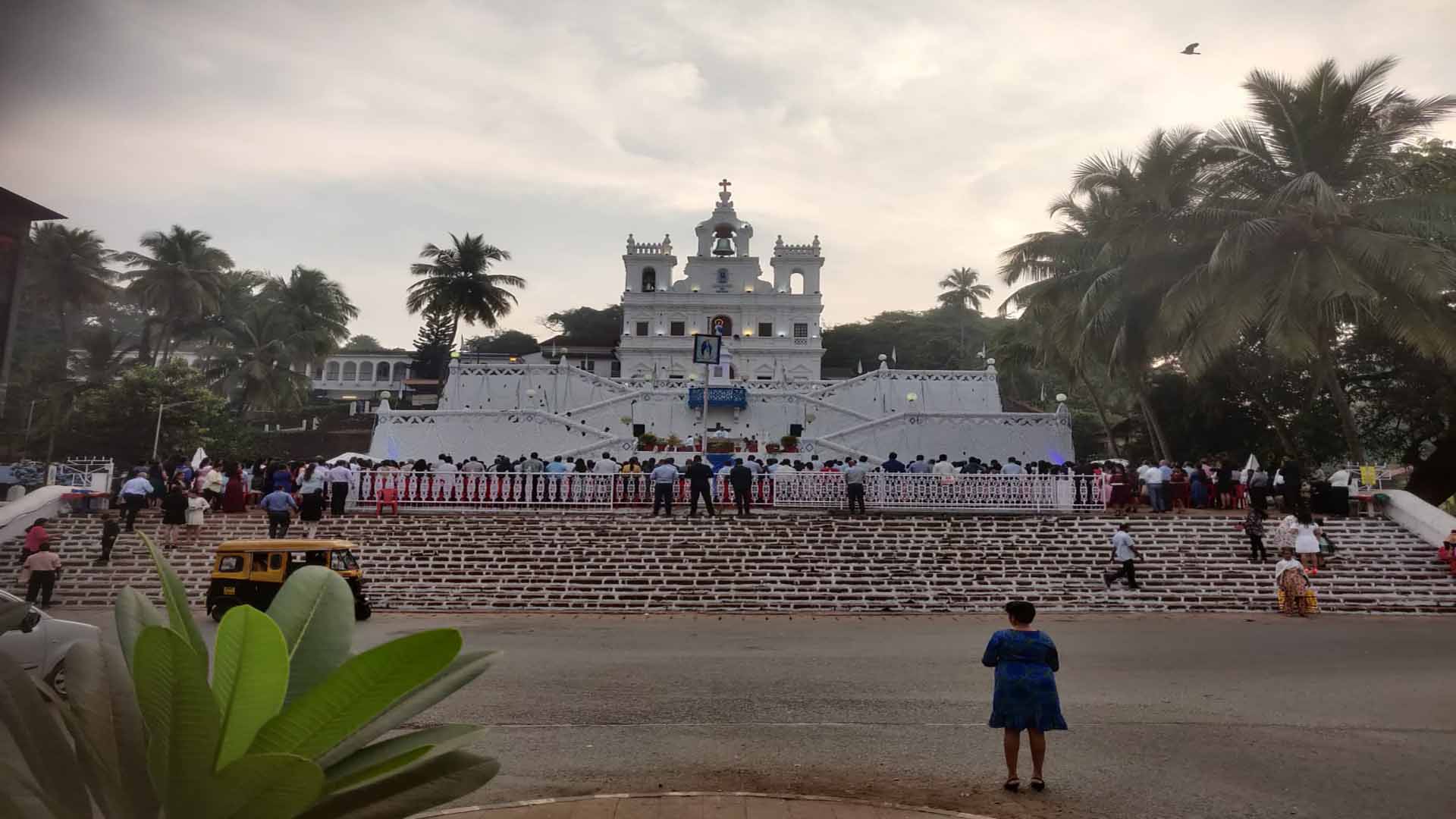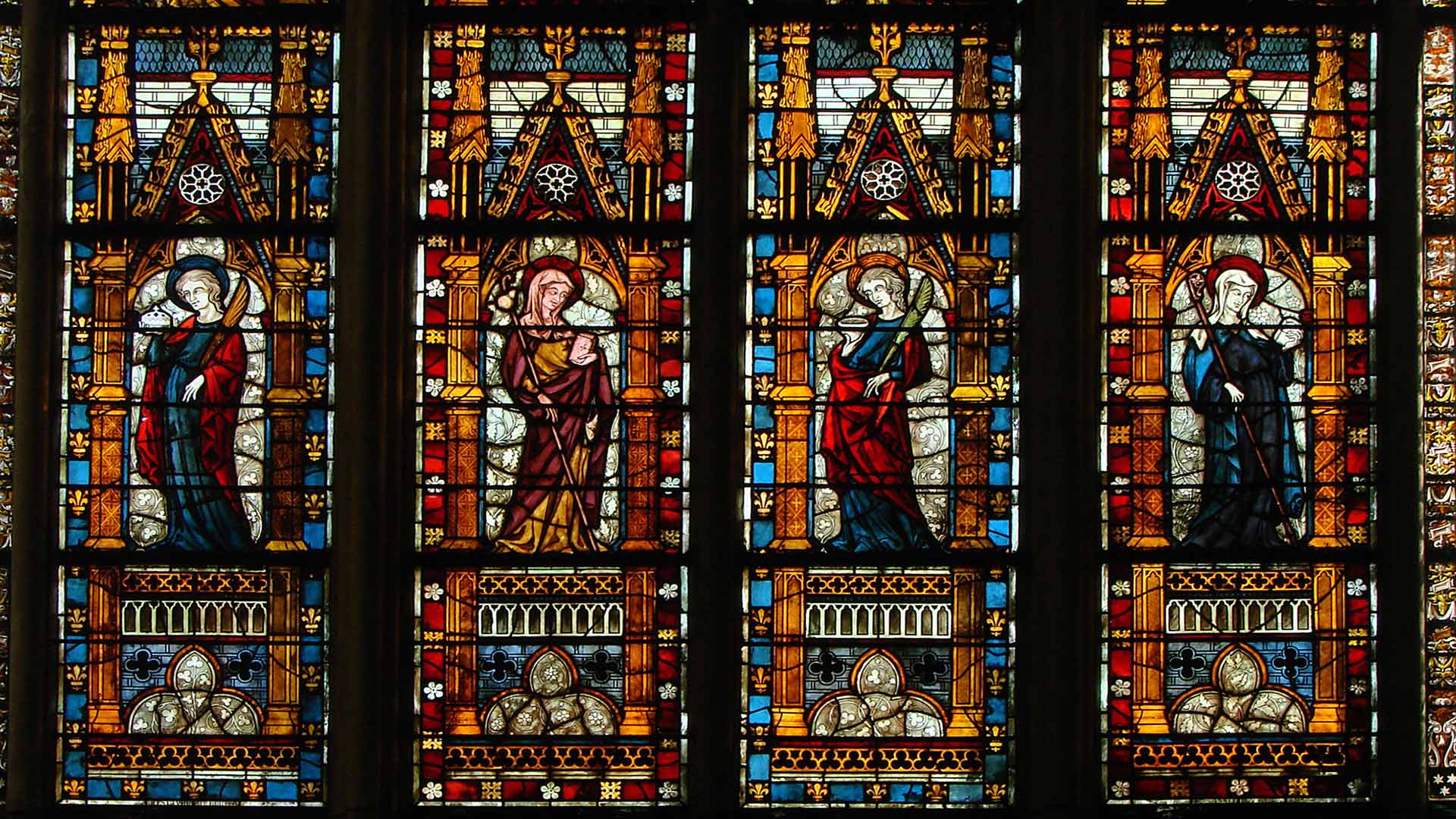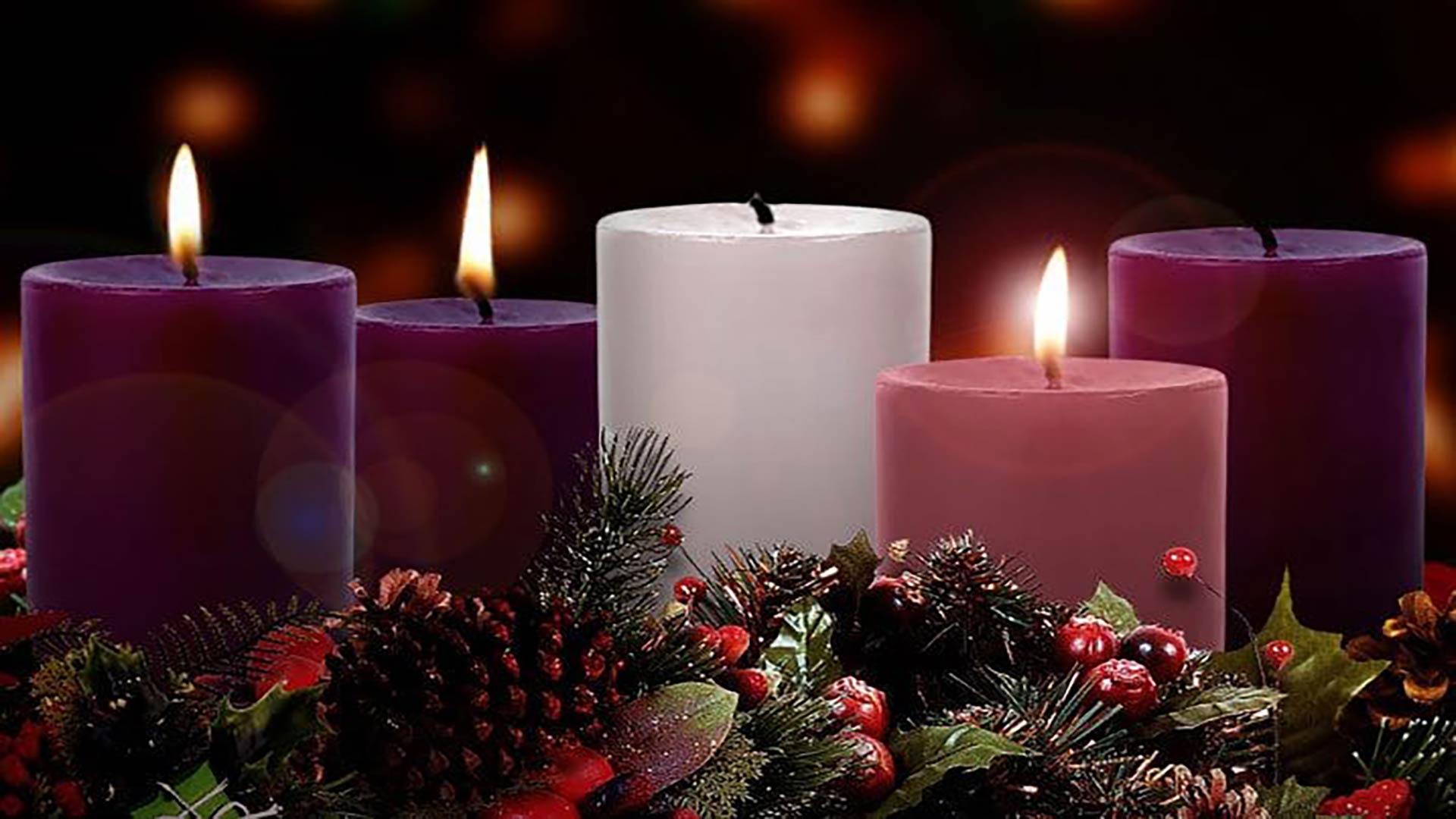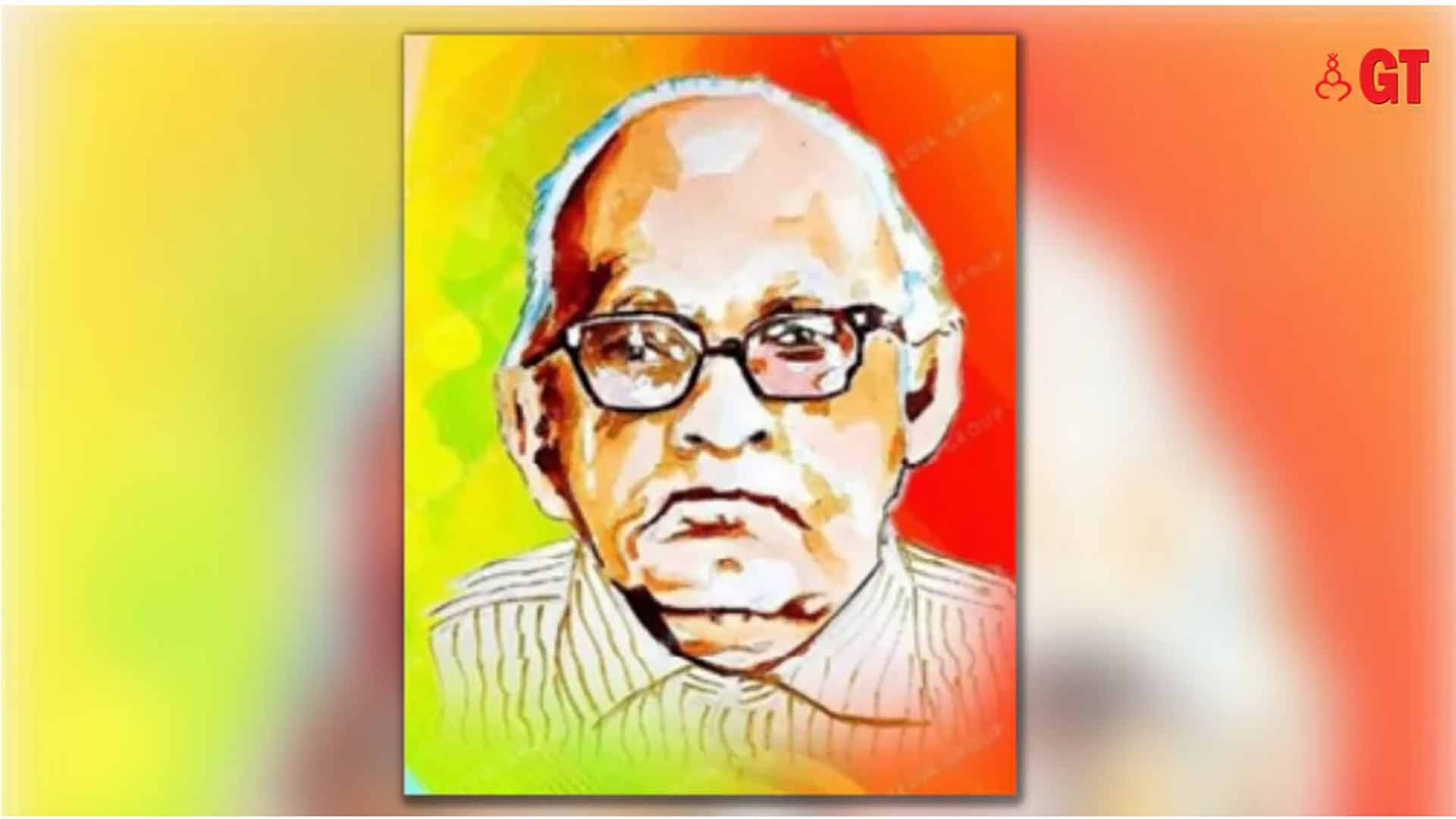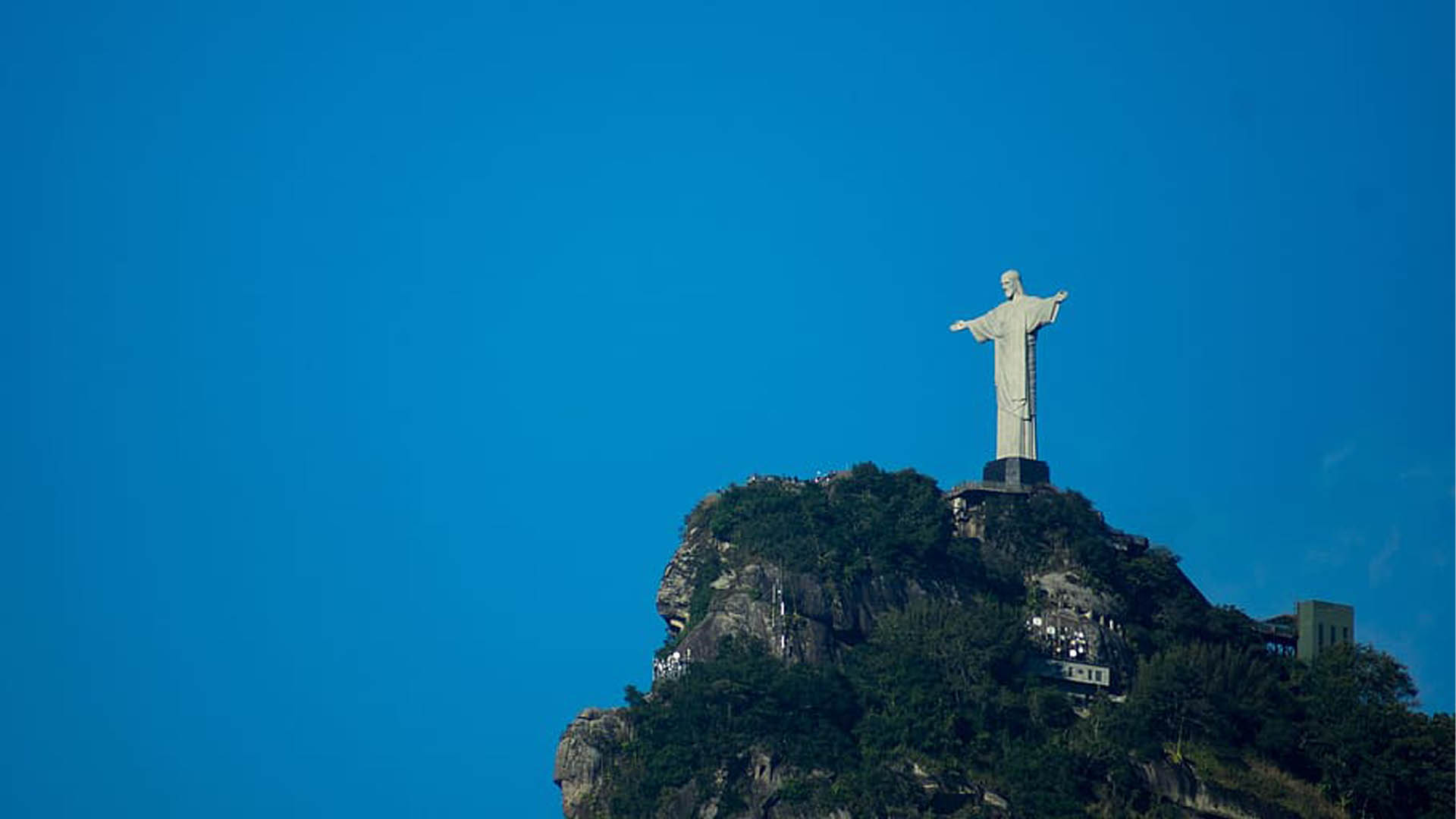Under Two Holy Names
The New Year will surely be brought in with much fanfare the world over. The faithful will drive enthusiastically to church in their year’s best outfits to pray for a worthy year ahead. No doubt, it is the beginning of the civil year, but since Time belongs to God, we ought to honour it. Moreover, there is a Christian facet to it: it is the first day of the Gregorian calendar, called so as it was introduced by Pope Gregory XIII, way back in the year 1582, as a modification of, and replacement for, the Julian calendar whose algorithm had miscalculated the date of Easter.
Although the Gregorian calendar is now used in most parts of the world, some churches not affiliated to Rome still follow the Julian. Ukraine is a case in point. Only some days ago, in a bid to distance itself from the Russian Orthodox Church, Zelenksky’s country fell in line with the Church in the West and celebrated Christmas on 25 December, instead of 6 January.
Some of our faithful, however, may be unaware that 1 January is the Octave of Christmas, which, this year, has fallen on a Sunday. The first day of the civil year is also dedicated to the Blessed Virgin Mary, in celebration of her unique privilege and title as Mother of God. Accordingly, the readings dwell on the Mother of Jesus and on the Holy Name of Jesus.[1] The Feast highlights Mary's role in the economy of Salvation and helps us place our problems and concerns under her mantle. To complete the picture, the Catholic Church also celebrates the World Day of Peace[2] on the first day of the first month of the year.
Today's First Reading is from the Book of Numbers (6: 22-27), one of the five books (Pentateuch) dictated by God to Moses. Called so because it begins by listing the numbers of a census of the Hebrew people, the Book represents a march of God’s people across the desert wilderness between Egypt and Canaan. In the course of this march, the people gathered experiences that eventually impacted their future. God asked Moses to address Aaron because his brother was a worshipper of a Canaanite god and had helped the Israelites to build a Canaanite idol to worship. God’s command and Moses’ blessing here are a promise of peace for Israel, which was to be fully realised with the Birth of Our Lord Jesus Christ.
The mystery of the Incarnation was a fulfilment of a long wait; it was a manifestation of God’s benevolence and love for His supreme creation, humankind. His Son has liberated us from the old law and from sin; we have also secured His blessings, the highest one for Christians being the privilege to be called God’s children (rather than creatures). Of course, none of this would be possible without the Blessed Virgin Mary’s willing collaboration; she is thus, very naturally, the Mother of God and Mother of the Church, which is the Body of Christ on earth.
That is why St Paul in the Second Reading (Gal 4: 4-7) says: “God sent forth His Son born of woman, born under the law, to redeem those under the law, so that we might receive adoption as sons.” His words highlight the human side of the Son of God; that He became man first to save the Chosen People; that He was formed by the religion of his ancestors (to us, the Old Testament); and that in time He perfected the law, whereby all men and women of goodwill would be saved.
Finally, in the Gospel according to St Luke (2: 16-21), we see that the poor shepherds were the first ones to receive the Good News of Salvation. They met Mary and Joseph, with the Babe lying in a manger; they soon understood the magnificent Hymn of the Angels, Gloria in excelsis Deo et in terra pax hominibus bonae voluntatis, and became the first proclaimers of the Word made Flesh; and in Him, they were adopted as children of God.
That at the end of the Octave Jesus was circumcised and given His Holy Name, as preannounced by the Angel Gabriel to Mary, justifies the celebration of His Holy Name concurrently with Mary’s title as Mother of God; it also explains why 1 January was, way back from the 13th century, observed as Feast of the Circumcision of Jesus, with a Marian orientation predating it. This feast day was cancelled by Pope John XXIII’s General Roman Calendar of 1960 and simply called “Octave of the Nativity”.
Like Mary, we too need to keep all these things, ponder them in our hearts, and be ever more faithful to Holy Scripture and Tradition. The Blessed Virgin understood the full import of her Son’s words only after the Resurrection and Pentecost. We too ought to bide our time and, meanwhile, put His Holy Name upon our world, pray for God’s blessing, and discern our vocation. Above all, we ought to eschew sin, cease to be slaves of the world, and happily be sons and heirs by God’s grace.
Banner: https://daylesford.org/the-solemnity-of-mary/
---
[1] At other times, or say, when the Second Sunday of Christmas does not coincide with 1 January, there is a different set of readings. The feast of the Maternity of the Blessed Virgin Mary was first granted, on the petition of King José I of Portugal, to the dioceses of Portugal and to Brazil and Algeria, in 1751. By 1914, the feast was established in Portugal for celebration on 11 October and was extended to the entire Catholic Church by Pope Pius XI in 1931. The 1969 Revision of the liturgical year changed it to 1 January.
[2] Pope Paul VI established it in 1967, inspired by Pope John XXIII’s Encyclical Pacem in Terris (1963) and with reference to his own Populorum Progressio (1967).
The Three Christmas Masses
Did you know of the three Christmas Masses – Midnight; Dawn; Morning – each with its own liturgy?
The Midnight Mass is also called ‘the Angel's Mass’; the second, ‘the Shepherd's Mass’; and the third ‘King's Mass’.
Although all readings are on the theme of hope, light and salvation, each of the three Masses has its own focus and all of them worth reflecting upon.
The First Reading is always from the Book of Isaiah, who is the Prophet par excellence of the Messiah and the Good News. The Second Reading of the first two Masses comprise passages from St Paul’s Letter to Titus whereas the Morning Mass is taken from the Letter to the Hebrews. The Gospel of the first two Masses is from St Luke, while the daytime Mass reads from St John.
The Lectionary carries a note: “For pastoral reasons, one or other of the three Masses may be used at any hour.
MIDNIGHT MASS
Why a Mass at midnight? It is traditionally believed that Jesus was born at midnight. The physical darkness is a reminder of the spiritual darkness we are steeped in, a darkness that only Christ the Light of the World can dispel.
The First Reading (Is 9: 2-4, 6-7) states: “The people who walked in darkness have seen a great light.” The prophecy is specific to Israel, whose king, Ahaz, had entered into alliances with kings instead of with the King of Kings. Isaiah announced to the hapless nation that the royal line would produce a descendant that would save them. Ahaz’s son Ezekiah was indeed a righteous king, but the adjectives describing him – “Wonderful Counsellor, Mighty God, Everlasting Father, Prince of Peace” – are infinitely more apt for Jesus Christ the Messiah, a descendant of the Royal House of David.
The Gospel account (Lk 2: 1-14) is about the humble birth of Our Lord, proof enough that the His government would be of the spiritual realm. That “there was no place for them in the inn” tells us of how the rich and mighty would reject Him, as they still do. No wonder, the poor shepherds were the first to be invited to visit the Divine Babe in Bethlehem.
After the Fall, there was a chasm between God and man. The Son of God came to overcome that barrier, yet we vacillate when it comes to things divine. Nowadays, when under the guise of secularism, the world is steeped in irreligion and passions, let us heed St Paul’s advice to Titus (2: 11-14): “… live sober, upright and godly lives in this world, awaiting our blessed hope, the appearing of the glory of our great God and Saviour Jesus Christ.”
In this dark world, then, Christmas comes with a message of light and hope for humankind.
DAWN MASS
The Mass at dawn commemorates the shepherds’ early and eager visit to adore the Lord in the manger. As natural light increases at dawn, those who believe in the Lord are blessed with His gift of light.
In the First Reading (Is 62: 11-12, Isaiah announces the good news of salvation to the daughter of Zion, that is, Jerusalem, or the Jewish people. Or, as the luminous Psalm says, “This day a new light will shine upon the earth: the Lord is born to us.” This light will shine on the just, and joy will belong to the upright of heart.
The Gospel (Lk 2: 15-20) tells us that the lowly – represented here by the shepherds, who were considered the scum of the earth – are the upright of heart: they see with eyes of faith, and they glorify and praise God. Like little children, it is the lowly who are apt to inherit the kingdom of God.
Yet, we are never worthy. As St Paul says to Titus (3: 4-7): “When the goodness and loving kindness of God our Saviour appeared, He saved us, not because of deeds done by us in righteousness, but in virtue of his own mercy.” Our baptism, then, is the dawn of a new life of the spirit.
DAY MASS
The third and final Christmas Mass is celebrated in broad daylight, symbolising the promised Son of God Who has been revealed to the world. The Gospel reading is a standing invitation to all nations to worship the new-born King of Kings, hence the name ‘King's Mass’.
The First Reading (Is 52: 7-10) announces the Good News to Israel, and eventually, to “all the nations; and all the ends of the earth shall see the salvation of the world.” How happy we should consider ourselves to be included in that number, thanks to the Apostles who visited our subcontinent way back in the first century (Kerala, Tamil Nadu) and later, other proclaimers of the Word, from the sixteenth century onwards (Goa and surrounding areas).
The Gospel (Jn 1: 1-18) strikes a somber note, that is, nevertheless, thought-provoking: “The true light that enlightens every man was coming into the world, He was in the world, and the world was made through Him, yet the world knew him not.”
How true that is of our world, two millennia after the Birth of Jesus. We know Him not, and those who are privileged to know, care not! “He came to his own home, and His own received Him not.” Jesus came to save Israel, and they rejected Him; He wants us to announce the Good News to the world, and what do we do?
How can we despise God Who has stretched out His hand to humankind?
The Second Reading (Heb 1: 1-6) emphasizes how “in many and various ways God spoke of old to our fathers by the prophets; but in these last days He has spoken to us by a Son… He reflects the glory of God and bears the very stamp of his nature, upholding the universe by his Word of power.” Let us acknowledge Him duly and gratefully.
This Christmas let us reflect on the power and glory of God and how we are privileged to inherit His light on earth and everlasting life in Heaven. Let us rise above matter and embrace the spirit; let us look beyond the physical and gaze at the supernatural; let us put the pettiness of the world behind us and live like the angels on high. Thanks to the Holy Catholic Church, the ineffable mystery of Christmas stays with us through the year.
Awaiting that Wondrous Birth
“Behold, a young woman shall conceive, and bear a son, and shall call his name Emmanuel.” Today, is there a clearer sign that Jesus was the One referred to in these words of the Prophet Isaiah? Some versions even translate ‘young woman’ as ‘virgin’. Who other than Jesus can lay claim to virgin birth? What woman other than Mary ever gave birth as a virgin? Was it not crystal clear that this was the Messiah that Israel had long been waiting for?
In the First Reading (Is 7: 10-14), Isaiah said those reassuring words to king Ahaz, a young and evil king of Judah (731 BC to 715 BC) responsible for introducing idol worship and sacrilege against the temple of the Lord (2 Kings 16; 2 Chron 28). The Prophet wished to win him back to the Lord by announcing the coming of a son to be named Ezekiah. He would save Israel but the king despaired of God’s help, put his trust in kingly alliances, and eventually caused the downfall of the kingdom.
More importantly, Isaiah’s words prefigured Jesus Christ, Saviour of the World, and marked the beginning of messianism.
Alas, how many Ahazes are there in our midst and, sadly so, within the Church itself: haven't their actions facilitated the entry of the “smoke of Satan” through some crack (as pointed out by a Pope in the 1960s)? We for our part have to “let the Lord enter! He is the king of glory” – as the Psalm sings. Or, as St Paul puts it in the Second Reading (Rom 1: 1-7), we are “called to belong to Jesus Christ”. This is an unparalleled privilege, a supreme honour, yet how reluctantly we wear the badge! Even in this blessed season of Advent, while the birth of our Saviour is imminent, we find ourselves so engrossed in worldly things that we forego the Saviour!
It is absolutely disastrous that Christmas is sometimes held with pomp and splendour and that Christ becomes only a pretext for a mundane celebration. Rather, we should have let our hearts be moved by the Gospel (Mt 1: 18-24) that dwells on the wondrous Birth of Our Lord! It may be noted that Mary had only been betrothed to Joseph when she received the divine call to be the Mother of Jesus. And how! Even before they came together, she was with child, through no fault of a man (as profane thinking may have us believe) but rather through God’s designs. But even though it happened in fulfilment of the Isaian prophecy it was not without a trace of suspicion....
Again, if we fast-forward to our times, we may be tempted to irreverently think of Mary as an unwed mother. But it was not so. Betrothal in those days meant that Mary and Joseph were husband and wife in all legal and religious aspects, except that of actual cohabitation. Meanwhile, God in His infinite wisdom provided for Jesus to be born before the couple had come together, thus to let it be known that He was “child of the Holy Spirit”. Think of how the claim of virgin birth would have been suspect had Jesus been born after the couple’s cohabitation. No doubt, Joseph had prior reservations (and even wanted to “quietly send her away”) but eventually he believed the Angel’s words – “do not fear to take Mary your wife, for that which is conceived in her is of the Holy Spirit; she will bear a son, and you shall call his name Jesus” – much unlike king Ahaz, his ancestor of the House of David, who became a victim of his own scepticism.
Thanks to Joseph the Silent Saint and to Mary conceived without Original Sin, we are blessed to have God become Man in order to save us. Earth never had anything more wondrous to show than the Birth of Our Lord and Saviour. On this Laetere Sunday, which focusses on the internal joy of anticipation, we enter the last leg of the Advent journey. Let us await the divine event that is to come, like people with clean hands and pure heart, who desire not worthless things (cf. Ps 23: 4), and let us wholeheartedly collaborate in God’s salvific plans.
Joy beyond compare
If celebrating the halfway mark helps boost our spirits, Gaudete Sunday does just that: lets us rejoice not only because Christmas is near but also because we have persevered in preparing for the Lord’s coming. This Sunday draws its name from the introit of the Latin Missal which reads: “Gaudete in Domino semper”, meaning “Rejoice in the Lord always.” Besides the pink or rose of the candle and of the priestly vestments symbolising joy, the readings, imbued as they are with a supernatural joy, help us bide our time to contemplate the Babe of Bethlehem.
But then, can we really rejoice with war, disease, corruption, climate change, suffering, and unrest all about us! Or will that rejoicing be possible only in the messianic times? In the First Reading (35: 1-6a, 10) Isaiah speaks of the time when nature will rejoice and sing at the coming of the Lord of Creation with strength, to save those who had longed for Him and suffered for the sake of His Holy Name.
On the other hand, we too can experience joy in this valley of tears. It is not a superficial joy brought in with festoons, but a supernatural joy that comes with faith. This joy is not a mere sensation but an act of the will – not dependent on what we feel but on what we consciously wish to feel. Truly, Christian joy is not contingent on the ups and downs of daily life but guided by our conviction that God moves and controls all history. By His Incarnation we know that He is there for us and saves us: easily a cause for rejoicing!
In the Second Reading, taken from the Letter of St James (5: 7-10), the Apostle[1] addresses Christians of Jewish origin. It is more of a moral rather than doctrinal teaching. He preaches patience, akin to that of a farmer awaiting “the precious fruit of the earth”, or, we may safely add, a woman expecting a baby. His wise counsel: “establish your hearts”; “do not grumble against one another”; “take the prophets who spoke in the name of the Lord” as role models. Simple yet effective advice. If we conduct ourselves in keeping with our faith, cultivating prudence and resignation, soon we will be on the highroad to holy joy.
Of joy we have a harbinger in St John the Baptist, one of the many prophets who spoke in the name of the Lord. In the Gospel (Mt 11: 2-11), Jesus says that John is “more than a prophet. This is he of whom it is written, ‘Behold, I send my messenger before Thy face, who shall prepare Thy way before Thee.’ Yet, we find that the Forerunner of Christ is a little unsure: he demands to know if Jesus is indeed the Messiah that they were waiting for (we must take a leaf from him in our age of false messiahs, mustn’t we?) That happened partly because John had expected Jesus to save Israel in the temporal realm. For his part, the Messiah defined his scope of action, directing John’s gaze to how He had fulfilled the Isaian prophecy, by giving sight to the blind and letting the lame walk, by cleansing the lepers and curing the deaf, and miracle of miracles, by raising the dead!
Those wonders were there for everyone to see, yet only the poor took no offence at Him. The rest – then, as now – were spoiled children that found no place for the Lord; they went on from smugness to spiritual blindness and hard-heartedness. They had failed to appreciate that both Isaiah and John pointed to the same Messiah. Quite an eye-opener for us, who are dutybound to bear witness to God’s mighty works and proclaim them from the rooftops; evangelise, prophesy, and be the salt and light of the world.
But alas, the ungodliness of the contemporary world falsely equates joy with feasting. Paradoxical though it may seem, supernatural joy calls for fasting, besides a life of prayer, virtue and penance. Only then can we hope to rejoice like the little children, who will inherit the kingdom of God; or, like the shepherds, who were the first hearers of the Good News while they kept watch over their flocks by night. Thanks to their proverbial joy, the third candle of Advent is called Shepherds’ Candle. And as we light it today, may we receive the grace to become progressively hopeful, repentant, joyful, and better prepared to meet the Lord.
---
[1] “Brother [cousin] of the Lord” (Gal 1: 19), a man of great reputation but barely mentioned in the Gospel. He began to believe in Jesus only after the Resurrection and a few years after Pentecost was a leader responsible for Christian communities having a majority of Jews in Palestine, Syria and Cilicia (present-day Turkey) (cf. Acts 15: 13-29) Of all the apostles, he was the most attached to Jewish traditions – the extreme opposite of St Paul.
Panjim Church to me
In reply to a quick question from Dolcy D'Cruz of Herald, Panjim, last night... Thank you, Dolcy!
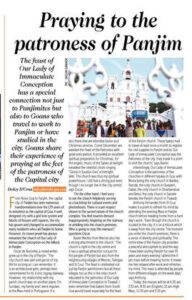
The city church has been part and parcel of my life for as long as I can remember. It is an architectural gem, perhaps best remembered for its iconic zigzag stairway.
However, my relationship with my parish church was on another plane. On Sundays, my family and I were regulars at the Mass held in Portuguese. It is also there that we attended Easter and Christmas services.
Come December, we awaited the Feast of the Patroness with great anticipation. It provided an excellent spiritual preparation for Christmas, for the angelic music of the Salves at twilight heralded the celestial choirs singing "Gloria in Excelsis Deo" a fortnight later. The church was thus my spiritual powerhouse. I still feel a strong pull even though I no longer live in the city centre.
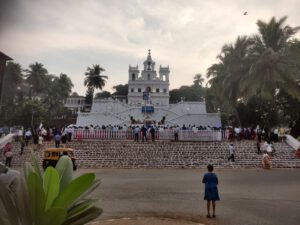
On the other hand, I feel sorry to see the church helplessly serve as a backdrop for cultural events and photoshoots. There is scant respect shown to the sacred nature of the church complex. You find tourists dressed inappropriately, lingering on the stairway or ambling into the church premises. Who is going to stop this menace?
A story of great promise
“You have made us for yourself, O Lord, and our heart is restless until it rests in you,” says St Augustine in his famous Confessions. Thankfully, as we enter the second week of Advent, the Prince of Peace gives us graces to achieve peace of mind and heart.
When the Lord touches us, life changes for the better. So it was with Jesse, a sheep farmer in Bethlehem, whose youngest son David received God’s call to be the king of Israel. David’s reign and that of his son Solomon formed a golden era, but soon thereafter Israel began to produce godless kings.
In those dark hours, Isaiah’s prophecy, heard in today's First Reading (Is 11: 1-10), was heart-warming: “There shall come forth a shoot from the stump of Jesse, and a branch shall grow out of his roots”. That regal shoot would be wise and clever like Solomon; prudent and strong like David; knowledgeable and respectful like Moses and the Patriarchs.
Clearly, Isaiah’s words referred to the Messiah. Born seven centuries later, Jesus was that “root of Jesse” who would provide an ensign to the peoples, both Gentiles and pagans. The Jews, long awaiting a Messiah, did not acknowledge the Carpenter’s Son; it was their loss and our gain, for now we can hope for the Lord’s Second Coming, when, “Justice shall flourish and peace till the moon fails.” (Ps 71: 7-8) And “justice” (meaning, sanctity or victory over sin) will bring about peace.
The Gospel of St Matthew (3: 1-12) takes us back to Isaiah who had pointed to “the voice of one crying in the wilderness: 'Prepare the way of the Lord, make His paths straight'” – unmistakably the future John the Baptist! His message is as relevant today as it was when Jewish high society’s observance of religious precepts was mere tokenism – or façadism. They were formalist and materialist, just as the world today is consumerist to boot.
What a far cry from the austere life of the Baptiser; like the prophets of old, especially St Elijah (cf. 2 Kings 1:8), he wore a garment of camel's hair, strapped a leather belt around his waist, and survived on locusts and wild honey. His mission was to serve: by announcing the Good News, baptising[1] the repentant, and denouncing the wicked. He called the bluff of the Pharisees and the Sadducees[2] – that “brood of vipers” – demanding that they “bear fruit that befits repentance” rather than bask in the glory of Abraham.
The promise of salvation continues through the Church. St Paul (Rom 15: 4-9) was convinced that “whatever was written in former days was written for our instruction, that by steadfastness and by the encouragement of the Scriptures we might have hope.” Jesus followed the law even while he sought to perfect it. Circumcision is a case in point: The act, which was at the heart of God’s covenant with Abraham, was meant to retrench and restrain the animal man as it removed a part of his body.[3] Yes, Christians do without it, for, as St Thomas of Aquinas noted, circumcision was only “a figure of baptism”— meaning to say, baptism has superseded it!
Salvation is a long story of great promise! But St John the Baptist does not fail to caution that a time will come (the Final Judgement) when “every tree that does not bear good fruit will be cut down and thrown into the fire”. When the Lord comes again, He will divide the wheat from the chaff; He will “gather His wheat into the granary, but the chaff He will burn with unquenchable fire."
Two millennia ago, St John the Baptist was privileged to see the incomparable First Coming of Jesus; repentance is fundamental for those of us who wish to witness His glorious Second Coming and be part of that story of great promise.
---
[1] St John himself points to how Jesus would baptise differently: “I am baptizing you with water, for repentance . . . He will baptize you with the Holy Spirit and fire.” (Mt 3:11).
[2] The Pharisees were zealous observers of the law and of oral tradition; the Sadducees hailed from priestly families and were politically connected, despising tradition and sticking to the written law; a third group comprised the Scribes, who were doctors of the law that interpreted the Torah.
[3] Cf. https://www.catholic.com/encyclopedia/circumcision
Watchful and Fearless
Today is the first of the four Advent Sundays and the beginning of a new liturgical cycle (Year A for Sunday Mass readings). They focus on waiting in hope for the Lord’s coming, an act symbolised by a purple candle traditionally placed in the evergreen wreath.
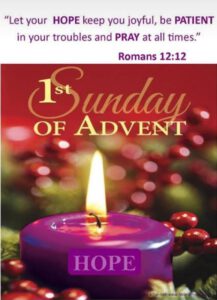
In the First Reading (Is 2: 1-5), the Prophet Isaiah glorifies Zion, the mountain on which stands God’s temple. He envisions peoples from across the world streaming to adore God and learn his law. A proper understanding of the Word of God will unite the peoples and inaugurate a period of peace, in which hatred will turn into esteem and armaments into instruments of work and welfare. In short, it will be the ‘City of God’ that St Augustine of Hippo speaks of in his De Civitate Dei, expounding a Christian view of society and history.
The spread of Christianity across the world was a step in that direction. As Pope Leo XIII points out in Aeterni Patris (1879), “the only-begotten Son of the Eternal Father, who came on earth to bring salvation and the light of divine wisdom to men […] commanded the Apostles to go and teach all nations, and left the Church which He had founded to be the common and supreme teacher of the peoples. For men whom the truth had set free were to be preserved by the truth; nor would the fruits of heavenly doctrines by which salvation comes to men have long remained had not the Lord Christ appointed an unfailing teaching authority to train the minds to faith.” Only a Church faithful to the Lord’s commands can “teach religion and contend forever against errors”,[1] thereby showing us the way to the new and eternal Jerusalem.
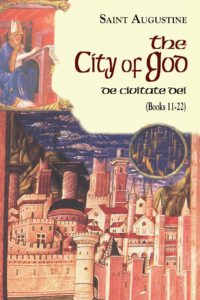
Christ’s Incarnation was a watershed in the history of humankind. From then on, we Christians have had the opportunity to learn the true law and work towards our salvation. Urging Christians to achieve this true liberation, by overcoming the darkness of sin, St Paul puts it very vividly to the Romans (13: 11-14): “You know what hour it is, how it is full time now for you to wake from sleep.” Then, he issues us a clarion call to “cast off the works of darkness, and put on the armour of light […] to put on the Lord Jesus Christ, and make no provision for the flesh to gratify its desires.” Which is a caution against falling head over heels for the evanescent world we live in.
How many of us respond positively to the Lord’s standing invitation? Isn’t much of what is going on in the world today an affront to the Creator? God gives His people enough rope, and some hang themselves! Few realise that it is no use gaining the whole world and losing one’s soul; similarly, they fail to see that life is terribly uncertain, and so is the time when the Lord will come again. The covid-19 pandemic was no doubt an eye-opener, but the world is back to its waywardness. To quote a nineteenth-century advocate of the Irish Catholics, “the condition upon which God hath given liberty to man is eternal vigilance; which condition if he break, servitude is at once the consequence of his crime and the punishment of his guilt.”[2]
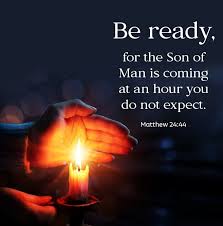
Isn’t servitude to sin rampant? How long do we wish to continue in the depths of the pit! We must, therefore, work hard to not let sin gain ascendancy in our individual and societal life; we must not only make a collective effort towards living a life pleasing to God but also not hesitate to swim against the tide of opinion when our spiritual good so requires. Finally, we must heed St Matthew’s counsel (24: 37-44) to “be ready: for the Son of Man is coming at an hour you do not expect.” Of course, if we remain watchful, there is nothing to fear; on the contrary, eternal happiness will be the reward that we will receive.
[1] https://www.vatican.va/content/leo-xiii/en/encyclicals/documents/hf_l-xiii_enc_04081879_aeterni-patris.html
[2] John Philpot Curran (1750-1817)
The Hope of Advent
What makes Christmas the most awaited Christian celebration of the year? In our materialistic age, it is made attractive by the gaiety that surrounds it. But, deep down, to a heart and mind attuned to spiritual truths, Christmas brings hope, for it not only marks Christ’s birth on earth but also teaches us to await His Second Coming.
Christmas is not limited to a day. The Catholic Church celebrates it from 25th December until the Solemnity of the Epiphany, which commemorates the manifestation of the Infant Jesus as the Saviour of the World.
And just how important is the preceding four-week liturgical season called Advent? If Christmas be the beginning of a spiritual journey, Advent is that much-needed preparation for its realisation. “Advent is thus a period for devout and joyful expectation.”[1]
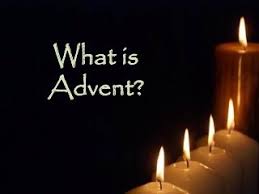
PERIOD
“Advent begins with Evening Prayer I of the Sunday falling on or closest to 30 November and ends before evening prayer I of Christmas.”[2] The Sunday on or closest to 30 November can range between 27 November and 3 December, depending on the year. This means that Advent begins on the evening of a Saturday falling between 26 November and 2 December (inclusive), and it ends on the evening of 24 December, which holds Evening Prayer I of Christmas (25 December).
THEMES
These are indicated by a colour code, candles on a wreath and the Liturgy (including the Word).
Colour:
Although the liturgical colour for Advent is violet or purple, like that of Lent, it is not a penitential season.[3]
Wreath:
“The Advent wreath, with the progressive lighting of its four candles, Sunday after Sunday, until the Solemnity of Christmas, is a recollection of the various stages of salvation history prior to Christ's coming and a symbol of the prophetic light gradually illuminating the long night prior to the rising of the Sun of justice.”[4]
Candles:
Three of the four candles are purple and used on the first, second and fourth Sundays, to signify hope, faith, and prayer and expectation, respectively. On the third Sunday of Advent, also called Gaudete[5](‘Rejoice’, in Latin, referring to expressed or exuberant joy) Sunday, a pink or rose candle is lit in addition to the two purple ones of the earlier Sundays, signifying joy. On Christmas Eve a white one is added: the ‘Christ candle’, signifying the purity of Our Lord.
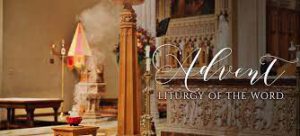
Readings:
In all three liturgical cycles, the First Reading, mainly from Isaiah, includes prophecies regarding the Messiah and the messianic times.
The Second Reading, almost always from St Paul, comprises exhortations and orientations that help us be in readiness and full of hope.
The Gospel on the First Sunday refers to the Second Coming of Our Lord at the end of times; on the second and third Sundays, the focus is on the mission of St John the Baptist as the precursor of the proclaimed Saviour and preacher of a personal readiness to receive salvation; and on the fourth Sunday, also called Laetere (‘Rejoice’, in Latin, referring to the internal joy of anticipation) Sunday, the Gospel refers to the events fostering a proximate preparation for the Birth of the Saviour, with the Mother of Jesus figuring prominently therein.
The weekdays are divided into two periods: one up to 16 December, wherein the First Reading is from Isaiah and the Gospel on the life and work of St John the Baptist; the second, from 17 December to 24 December, serving to prepare more closely for the Lord’s Birth, has prophecies regarding the Messiah, from different books, for the First Reading, whereas the Gospel relates events that prepare the Nativity.[6]
Finally, the floral decoration and the music of Advent is marked by moderation while the Gloria is neither sung nor recited.
Liturgy:
Advent Sundays (like those of Lent and Easter) take precedence over all solemnities and feasts of the Lord. Solemnities occurring on these Sundays are observed on the Saturdays preceding. No funeral Masses are celebrated either.
In the liturgy of Advent, two great figures are presented as guiding lights: John the Baptist, the precursor of Jesus, whose preaching is an invitation to conversion as an indispensable condition for salvation; and the Virgin Mary, who gave herself entirely to His holy will and waited in hope and joy for His coming into the world.
The entire liturgical season is so crucial to preparation that it is especially recommended that there be homilies even on the weekdays of Advent.
CONCLUSION
All in all, here is God’s beauty and majesty flowing through Scripture and ritual. Not only is the first Sunday one of hope, the whole of the season of Advent is so. This is a hope beyond all hopes, an eminent preparation for the Feast of Christmas. As the saying in Portuguese goes: “O melhor da festa é esperar por ela.” – The best part of the feast lies in waiting for it!
[1] https://www.archbalt.org/wp-content/uploads/2017/04/GeneralNormsLiturgicalYear.pdf No. 39
[2] Ibid.
[3] According to the Code of Canon Law: “The penitential days and times in the universal Church are every Friday of the whole year and the season of Lent.” (No. 1250)
[4] Directory on Popular Piety and the Liturgy Principles and Guidelines, No. 98
[5] The first word of the Introit of the Mass that Sunday.
[6] Cf. ‘Synopsis of the Lectionary’, in Lectionary (Catholic Press, Ranchi, 2011), p. x.
Correspondência epistolar de Shankar Ramani
Por ocasião do centenário de nascimento de Shankar Ramani, traduzi uns trechos da sua correspondência epistolar em concani, publicada pela Revista Zaag (Vol. 32, No. 1, Agosto de 2005, pp. 20-22), da direcção de Ravindra Kelekar, e aos quais acrescentei notas de rodapé.
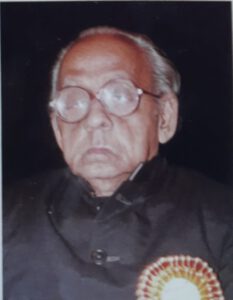
Sem data
Prezado Sr. Gajanana Jog[i]
…………………………………………………………………........................................................................................................................................................
De volta da escola, passávamos pela casa do Sarmalcar. Sada Sarmalcar[ii] era amigo de meu Pai. No vaivém da escola, dizia ‘Lá vai o fraco pugilista Ramani.’ Depois disso eram as casas do dr. Edu Poi[iii], Namtu Poi Dhungat[iv], Prof. Araújo Mascarenhas[v], e no fim da rua a grande casa do magnate Dempó[vi]. Eram casas ligadas. De entre elas, ficava a casa do proprietário Dattá, e ligada a ela a de Padmanata Xette. Em frente à casa do proprietário Dattá, no fim da rua, depois das casas de Ramachondra Xette, D. B. Desai, o rato do Neurencar, via-se a uma fila de casas de Pundolica Camotim[vii]. Essa era outra rua. Antes de esta começar, à esquina, havia um poste. Ao cair da tarde, um empregado da Câmara era obrigado a pendurar nele um petromax aceso.
A rua que passava pela escola ia direita à praça de automóveis. Aí se situavam as lojas de roupa e de confeitos. A rua que tomávamos de volta da escola ia direitinha ao cemitério de Santa Inez[viii]. No caminho, depois de Dom Bosco[ix], na mesma rua ficava a máquina de descasque e outra de fabrico de gelo de um parse[x]. Aquela era manejada por um indivíduo de nome Xencor. O parse era amigo de meu Pai. Quando fossemos lá, o parse ordenava ao Xencor que me desse gelo. Era uma máquina muito conhecida. Na traseira havia uma casa de balcão onde sentava a notória mulher pública, Saku. Gorda, sentava-se vestida de maneira coquete. Além de jovens liceístas, de dezassete ou dezoito anos, eram seus clientes grandes advogados e comerciantes, segundo me disse, na altura, Kamlakar Nagorcencar[xi]. E era verdade.
Até o ano de 1938, a cidade de Pangim se estendia dos Correios até à casa do Dr. Govinda Vaidia[xii]. A zona adiante fazia parte da aldeia de Taleigão[xiii]. Foi por isso que, até 1938, Soku ocupou esse balcão sem receio. Logo depois, veio um novo Governador, José Cabral[xiv]. Homem inteligentíssimo, mas ateu. Promulgou uma nova lei a estender os limites da cidade para além do cemitério. Em consequência, chegou a hora de mudar de casa. Para onde iria? Adiante, era tudo crematório. Já antes das cinco da tarde, a gente tinha medo de passar pelo cemitério. Um advogado que era cliente da Soku deu-lhe, porém, uma ideia. Soku fez logo um requerimento, enviando-o directamente ao Governador Cabral. Eis o conteúdo: “Trabalho como prostituta, servindo assim a sociedade. Não só isso, até dou um desconto aos alunos do Liceu.” O Governador foi esperto. Logo que leu esse requerimento de Soku, despachou: “Quem tem arte, faz vida em toda a parte.”
Por hoje é só.
Se me der na bitola, escreverei de novo.
Espero a sua resposta.
Como sempre,
Shankar Ramani
24.8.1995
…………………………………………………………………........................................................................................................................................................
Até o ano de 1928, não havia luz eléctrica em Pangim. Em certos cruzamentos ardia o petromax a noite inteira. Em 1929, veio a corrente eléctrica. O Governo enviara dois engenheiros para tratar da instalação de postes e de uma central eléctrica[xv]. Um deles era alemão, outro parse. Quando passavam os fios por cima dos postes, lembro-me de lhe ouvir dizer: ‘Ó, pá; ó, pá’. No dia em que Pangim veio a ter electricidade, toda a gente se pôs a passear pela cidade. Eu, o Kamlakar e o Casimiro Monteiro[xvi] vadiámos até às dez da noite.
…………………………………………………………………........................................................................................................................................................
27.8.1996
Prezado Sr. Jog
No ano de 1933 passei o Primeiro Grau com a nota de ‘Bem Habilitado’. Em junho de 1938, meu Pai matriculou-me como interno numa escola oficial. Ia-se à escola pelo recinto do Liceu. Descendo os degraus, chegava-se ao pé da Igreja. Depois, dando volta ao jardim, passava-se pelo Cine-Teatro Nacional[xvii] e o Quartel da Polícia[xviii]; e logo então, dobrando a esquina da Biblioteca Central[xix], chegava-se à nossa escola, que abria às 8,30 da manhã. Às 10,45, tínhamos um intervalo de 15 minutos. Nessa altura, chegava minha mãe, trazendo pães redondos, bem cortados, com manteiga caseira e açúcar, para eu comer, e café para beber. Eventualmente, se ficasse com muita fome, ia eu ao mercado na vizinhança onde comia gelebis[xx] de valor de um poiçá[xxi]. Um pouco além era o Campal. Na aula, sentava-me ao pé da janela. Eram dois alunos em cada banco. O outro era o mestiço Hugo Mendes. Não estudava nada. Era só esperteza saloia. O nosso professor chamava-se Frutuoso[xxii]. Um bom homem. Excelente professor. A janela dava para ver os vapores que faziam carreira entre Pangim e Betim[xxiii].
Nos primeiros seis meses, à parte o desenho, tive boas notas em todas as disciplinas. Infelizmente, por um mês sofri um ataque de sarna nas mãos. Nos primeiros dias, o professor deixou-me sentar sozinho num banco lá fora. Depois, fui proibido de vir à aula até curar a sarna. Perdi assim um mês e meio a dois meses. Enquanto me restabelecia, eram os dias de exames. Saí aprovado. Perdi a nota de Distinção. Precisamente nesse ano o meu Pai foi transferido para Mormugão. Entretanto, enviou os filhos para a aldeia de Durbate[xxiv], onde construíra uma casa.
…………………………………………………………………........................................................................................................................................................
[i] Gajanana Jog é um eminente contista na língua concani.
[ii] Sada, diminutivo de Sadananda, Sarmalcar era livreiro, com loja ao pé do templo Mahalaxmi, em Pangim.
[iii] Edu Poi, de nome complete Roguvira Sridora Poi Vernencar, descendente do antigo Malú Poi Vernencar, líder da comunidade hindu dos tempos do conquistador Albuquerque, era um recorrido clínico em Pangim, com residência na antiga Rua Afonso de Albuquerque.
[iv] Comerciante de ferramentas em Pangim.
[v] Distinto professor do Liceu, advogado, escritor e poeta, de nome completo Joaquim de Araújo Mascarenhas
[vi] Abastado proprietário e homem de negócios.
[vii] Comerciante geral.
[viii] Um dos bairros e paróquias de Pangim.
[ix] A Escola Dom Bosco foi fundada em Pangim, no ano de 1942, no sítio onde existia o palecete do Conde de Nova Goa.
[x] Na altura, talvez o único parse estabelecido em Goa, de apelido Mody.
[xi] Advogado em Margão.
[xii] Médico-cirurgião, que, segundo me informou o poeta Madhav Borcar, fabricara um aparelho electrocardiograma, para uso próprio.
[xiii] Uma das aldeias do concelho das Ilhas, a qual deu guarida à frota de Afonso de Albuquerque.
[xiv] Um dos mais eminentes governadores da antiga Índia Portuguesa, no período de 1938-45
[xv] Na altura, situava-se na Rua Heróis de 5 de outubro, hoje Rua Atmarama Borcar.
[xvi] Agente da Polícia, transferido de Goa por ordem do juiz Severino Balula.
[xvii] Fundado como Éden Cinema, passou a ser denominado Cine-Teatro Nacional em 1933.
[xviii] Situado na antiga Praça das Sete Janelas, depois conhecida como Largo Afonso de Albuquerque.
[xix] Fundada em 1832, com o nome de Pública Livraria, passando ultimamente a ser denominada Biblioteca Vasco da Gama, ora Krishnadas Shama Central Library, transferida para a nova urbanização do Pattó.
[xx] Doce de tipo bobina suculenta
[xxi] Moeda indiana
[xxii] Talvez se refere ao professor José Egídio Fidelis Frutuoso de Souza, de Pilerne.
[xxiii] Bairro da aldeia de Verém, do concelho de Bardez, que se situa na banda norte do rio Mandovi.
[xxiv] Aldeia do concelho de Pondá, um dos portos de navegação fluvial onde a lancha Pangim-Sanvordém fazia escala e onde descarregavam os patamaris vindos do Canará e de outros lugares.
(Publicado na Revista da Casa de Goa, https://casadegoa.org/revista/ii-serie-n-o-19-novembro-dezembro-de-2022/
Série II, No. 19, Novembro-Dezembro de 2022)
Thy Kingdom Come!
Today is the culmination of the liturgical year, a special day to reaffirm our faith and trust in Our Lord Jesus Christ as the King of the Universe. This Solemnity, which, according to the older liturgical calendar, used to be observed on the last Sunday of the month of October, preceding the Feast of All Saints, is now held on the Sunday immediately prior to the first Sunday of Advent.
The day’s readings are a clear endorsement of the Kingship of Our Lord. In the background to the First Reading (2 Sam 5: 1-3) lies the story of Saul, the first king of Israel, who lost to the Philistines, an enemy tribe. Given his ineptitude, God guided the Prophet Samuel to David, a humble but talented musician, who was secretly anointed king. While Saul was still living, David settled in Hebron where he was accepted by the tribe of the southern kingdom of Judah and reigned as their king for seven years.
After Saul died, the northern tribes who had been under Saul came to David at Hebron and anointed him King of all of Israel. Hebron, a Palestinian city thirty kilometres from Bethlehem, is one of the oldest cities in the Levant (a geographical area comprising Lebanon, Jordan, Palestine, Israel and Syria) and now in the focus of the Israeli-Palestinian conflict.
David reigned for forty years, from his capital Jerusalem, until he died at 70 years of age. He had already chosen his son Solomon for his successor, after whose death Israel was no longer a united kingdom. As for David, he is still honoured as an ideal king and the earthly forefather of our Lord and Saviour Jesus Christ, who by His Cross willed to unite all the peoples of the world.
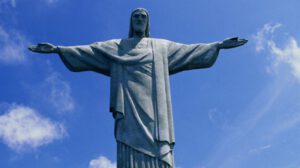
Equally apt for the great Feast of the Kingship of Christ is that passage of St. Paul’s Epistle (Col. 1: 11-20) that reminds us Christians that God has “qualified us to share in the inheritance of the saints in light” and “transferred us to the kingdom of His beloved Son, in whom we have redemption, the forgiveness of our sins.” Jesus is the Alpha and the Omega, through whom and for whom all things were created, “whether thrones or dominions or principalities or authorities”. Jesus made peace “by the blood of his cross”, and “in Him all things hold together.”
The Gospel text (Lk 23: 35-43) points to the striking contrast between Our Lord’s Passion and His final Victory. He died not because he deserved to die; He chose to die as a sacrificial lamb for our salvation. Not realising this, the soldiers mocked at him, saying, “If you are the King of the Jews, save yourself!” Jesus had clarified that His kingdom was not of this earth; and although the inscription ‘Iesus Nazarenus Rex Iudaeorum’ (‘Jesus of Nazareth, King of the Jews’) was meant to be ironic, it went down in history as the real truth. It reflected the conviction that Jesus was indeed the Messiah that they were waiting for – although this school of thought was anathema to the establishment.
There is no doubt, however, that both Jewish tradition and public opinion had unwittingly endorsed the true and complete kingly identity of Jesus. But what did He mean by ‘Kingdom’, as in the remarkable words ‘Thy Kingdom come’ from the Lord’s Prayer? In his book Jesus of Nazareth, Pope Emeritus Benedict XVI writes: “The Kingdom is not a thing, it is not a geographical dominion like worldly kingdoms. It is a person; it is He.”
The Lord’s Kingdom is indeed a spiritual kingdom that has the minds and hearts of the whole of humankind for its domain; but this mystical dimension has its consequence in civil society too. In fact, it is here that we Christians must practise the Beatitudes to the fullest extent, and proclaim the Gospel to the ends of the world, ensuring that our earthly journey becomes a fulfilment of God’s will – the will of His Son, Jesus Christ, King and Lord of the Universe.
